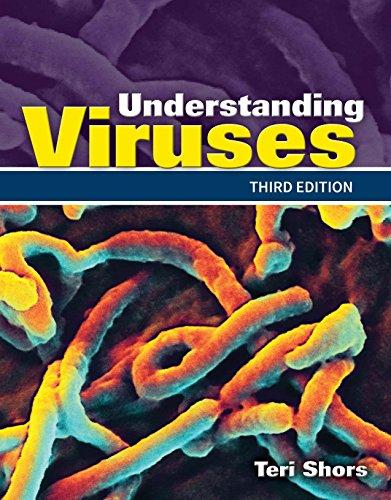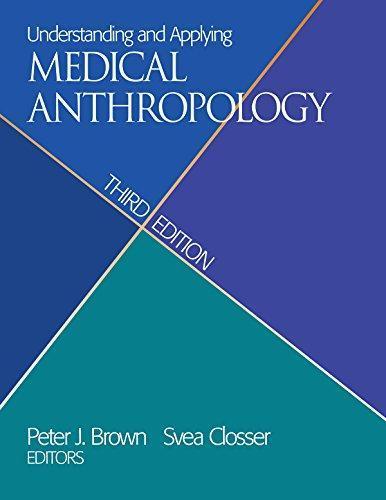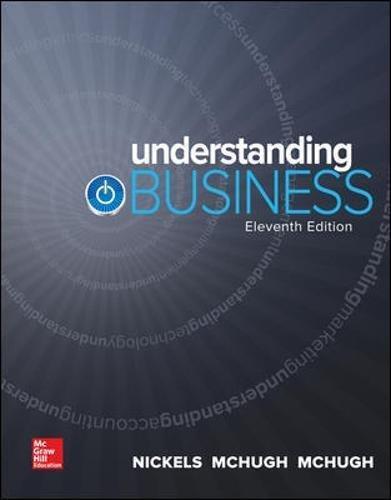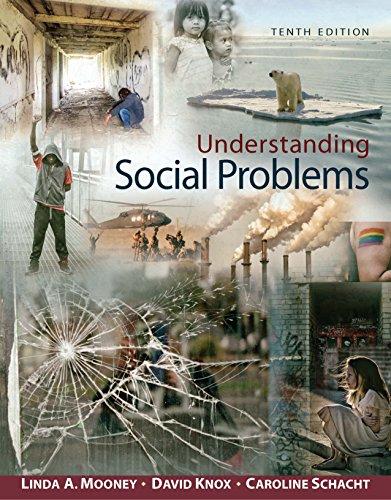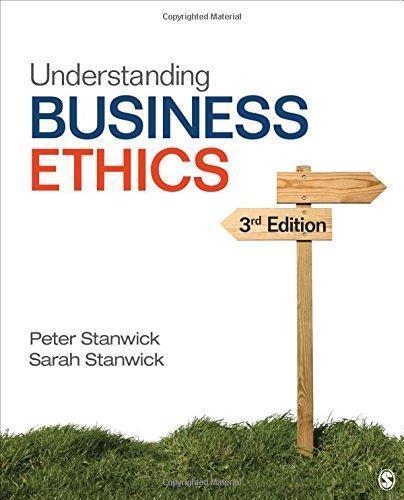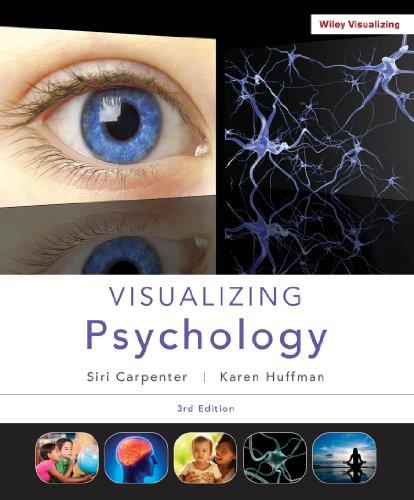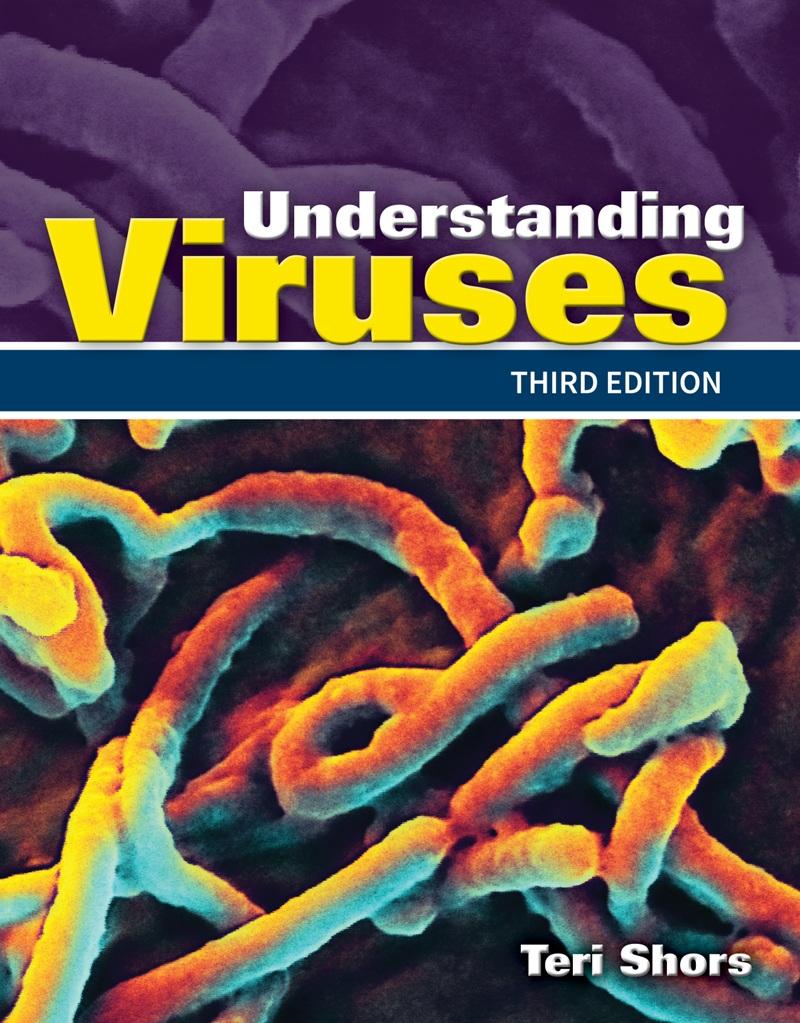Visit to download the full and correct content document: https://ebookmass.com/product/understanding-viruses-3rd-edition-ebook-pdf-version/
More products digital (pdf, epub, mobi) instant download maybe you interests ...
Understanding and Applying Medical Anthropology 3rd Edition u2013 Ebook PDF Version
https://ebookmass.com/product/understanding-and-applying-medicalanthropology-3rd-edition-ebook-pdf-version/
Strategic Staffing (3rd Edition – Ebook PDF Version)
3rd Edition – Ebook PDF Version
https://ebookmass.com/product/strategic-staffing-3rd-editionebook-pdf-version-3rd-edition-ebook-pdf-version/
Understanding Business 11th Edition – Ebook PDF Version
https://ebookmass.com/product/understanding-business-11thedition-ebook-pdf-version/
Introduction to 80×86 Assembly Language and Computer Architecture – Ebook PDF Version
https://ebookmass.com/product/introduction-to-8086-assemblylanguage-and-computer-architecture-ebook-pdf-version/
University Calculus: Early Transcendentals (3rd Edition – Ebook PDF Version) 3rd Edition – Ebook PDF Version
https://ebookmass.com/product/university-calculus-earlytranscendentals-3rd-edition-ebook-pdf-version-3rd-edition-ebookpdf-version/
Understanding Flight, Second Edition – Ebook PDF
Version 2nd
https://ebookmass.com/product/understanding-flight-secondedition-ebook-pdf-version-2nd/
Understanding Social Problems 10th Edition – Ebook PDF
Version
https://ebookmass.com/product/understanding-social-problems-10thedition-ebook-pdf-version/
Understanding Business Ethics Third Edition – Ebook PDF
Version
https://ebookmass.com/product/understanding-business-ethicsthird-edition-ebook-pdf-version/
Visualizing Psychology, 3rd Edition 3rd Edition – Ebook
PDF Version
https://ebookmass.com/product/visualizing-psychology-3rdedition-3rd-edition-ebook-pdf-version/
Shors, Teri. Understanding Viruses, Jones & Bartlett Learning, LLC, 2016.
Brief Contents
CHAPTER 1 Introduction to Viruses
CHAPTER 2 Virus architecture and Nomenclature
CHAPTER 3 Eucaryotic Molecular Biology, Cellular Hurdles, and How Viruses Hijack Host Cells
CHAPTER 4 Mechanisms of Viral entry and Spread of Infection in the Body
CHAPTER 5 Host resistance to Viral Infections
CHAPTER 6 Epidemiology
CHAPTER 7 Laboratory Diagnosis of Viral Diseases and Working with Viruses in the Research Laboratory
CHAPTER 8 Poliovirus and Other Enteroviruses
CHAPTER 9 Influenza Viruses
CHAPTER 10 Hepatitis Viruses
CHAPTER 11 Herpesviruses
CHAPTER 12 Human Immunodeficiency Virus (HIV)
CHAPTER 13 Rabies
CHAPTER 14 Poxviruses
CHAPTER 15 New and Reemerging Viruses
CHAPTER 16 Viruses and Cancer
CHAPTER 17 The History of Medicine, Clinical Trials, Gene Therapy, and Xenotransplantation
Shors,
CHAPTER 18 Infectious Molecules: prions and Viroids
CHAPTER 19 Plant Viruses
CHAPTER 20 The Best for Last: Bacteriophages
APPENDIX A Properties of Human Viruses
APPENDIX B Baltimore Virus Classification
APPENDIX C Case Study: Combating the Worst Epidemic of Ebola Virus Disease in Human History
GLOSSARY
INDEX
Contents
Foreword
Preface
Acknowledgements
1 Introduction to Viruses
1.1 Characteristics of Viruses
1.2 Early Virus Studies
1.3 Learning from Viruses
1.4 Theories of Viral Origin
1.5 The Helpful or Collaborative Viruses
1.6 Human and Aquatic Viromes
1.7 Applications of Viruses in Health or Medicine
1.8 Viral Infections: A Brief Introduction to Transmission and Pathogenesis
1.9 Viruses in History: Great Epidemics
1.10 Recent Viral Outbreaks
Summary Resources
2 Virus Architecture and Nomenclature
2.1 Discovery of Emerging Viruses in the 21st Century
2.2 Properties of Viruses
2.3 Viral Structure and Morphology
2.4 Viruses That Challenge the Definition of a Virus
2.5 Taxonomy: What’s in a Name?
2.6 Baltimore Classification
2.7 Viral Disease Syndromes Overlap
Summary
Resources
3 Eucaryotic Molecular Biology, Cellular hurdles, and how Viruses hijack host Cells
3.1 Genes Required for Assembly of Infectious Virus Particles
3.2 Molecular Biology Review
3.3 Molecular Hurdles of the Host Cell
3.4 Virus Replication Cycles: One-Step Growth Curves
3.5 Key Steps of the Viral Replication Cycle
3.6 The Error-Prone RNA Polymerases: Genetic Diversity
3.7 Targets for Antiviral Therapies
Summary Resources
4 Mechanisms of Viral Entry and Spread of Infection in the Body
4.1 Preferred Routes of Entry
4.2 Mechanisms of Viral Spread or Pathogenesis
4.3 Patterns of Diseases
4.4 Virus Exit: Shedding
4.5 Survival of Viruses in the Environment
4.6 Human Viruses in Water Environments
Summary Resources
5 Host Resistance to Viral Infections
5.1 Physiological Factors and Barriers Affecting Resistance
5.2 Host Defenses Against Viral Invaders: Nonspecific Host Defenses (Innate Immunity)
5.3 Immunity Takes Time: Specific Immune System Responses (Adaptive Immunity)
5.4 Virus Evasion Strategies
5.5 Serum Therapy and Vaccination
5.6 Vaccines
Summary Resources
6 Epidemiology
6.1 What Is Epidemiology?
6.2 History of Epidemiology: From Observational Data to Preventative Action
6.3 The Complexities of Disease Transmission
6.4 Epidemiology Today
6.5 Prevention and Containment of Contagious Diseases
6.6 Travel Medicine
6.7 Tracking Diseases from Outer Space: Remote Sensing and Early Warning Systems
Summary Resources
7 Laboratory Diagnosis of Viral Diseases and Working with Viruses in the Research Laboratory
7.1 Proving Causation of Viral Diseases
7.2 Viral Diagnostics in the Clinical Laboratory
7.3 Viral Load Testing and Drug Susceptibility Testing
7.4 Working with Viruses in the Research Laboratory
7.5 Laboratory Safety
Summary Resources
8 Poliovirus and Other Enteroviruses
8.1 Brief Overview of Enteroviruses
8.2 The History of Polio
8.3 Clinical Features of Poliomyelitis
8.4 Classification and Structure of Poliovirus
8.5 Laboratory Diagnosis of Poliovirus Infections
8.6 Cellular Pathogenesis
8.7 Poliovirus Replication
8.8 Treatments
8.9 Prevention
8.10 Poliovirus Eradication Is Unfinished Business
8.11 Other Enteroviruses (Nonpolio Viruses)
Summary Resources
9 Influenza Viruses
9.1 History of Influenza
9.2 Epidemiology of Influenza
9.3 Clinical Features of Influenza
9.4 Classification of Influenza Viruses
9.5 Laboratory Diagnosis of Influenza
9.6 Cellular Pathogenesis
9.7 Immunity
9.8 Influenza A Virus Replication
9.9 Genetic Variation in Influenza Viruses
9.10 Influenza Pandemics in History
9.11 Influenza Pandemic Scares
9.12 Antivirals for Influenza Treatment
9.13 Vaccines
9.14 International Influenza Surveillance
Summary Resources
10 Hepatitis Viruses
10.1 The History of Viral Hepatitis
10.2 Epidemiology of Viral Hepatitis
10.3 Clinical Features of Viruses That Cause Primary Hepatitis
10.4 Laboratory Diagnosis of Viral Hepatitis Infections
10.5 Hepatitis Virus Replication Cycles
10.6 Pathophysiology of Chronic Hepatitis Virus Infections
10.7 Genetic Diversity of Hepatitis Viruses
10.8 Management and Prevention of Hepatitis A–E Viruses
Summary Resources
11 Herpesviruses
11.1 Herpesvirus History and Nomenclature
11.2 Clinical Signs and Symptoms of Human Herpesviruses
11.3 Laboratory Diagnosis of Herpesvirus Infections
11.4 Herpesvirus Replication Cycle
11.5 Antivirals/Treatment of Herpesvirus Infections
11.6 Chickenpox and the Development of Other Herpesvirus Vaccines
11.7 The Use of Genetically Engineered Herpes Simplex Virus to Treat Brain Tumors
Summary Resources
12 Human Immunodeficiency Virus (HIV)
12.1 The History of HIV
12.2 HIV Transmission
12.3 Prevention of HIV Infection
12.4 Global Epidemiology of HIV/AIDS: Closing the Gap
12.5 HIV/AIDS in Sub-Saharan Africa
12.6 Central Asia and Eastern Europe: Hot Spots in the Worldwide HIV Epidemic
12.7 HIV/AIDS in India and China
12.8 HIV/AIDS in the United States and Six U.S.–Dependent Areas
12.9 Clinical Symptoms of HIV/AIDS
12.10 Laboratory Diagnosis of HIV
12.11 HIV Replication Cycle
12.12 HIV Human Genetics/Resistance: The Smallpox Hypothesis
12.13 Managing HIV Patients: Antiretroviral Therapy (ART)
12.14 HIV and ART-Related Costs in the United States
12.15 Is an HIV Vaccine Possible?
Summary Resources
13 Rabies
13.1 History of Rabies
13.2 Epidemiology of Rabies
13.3 Human Rabies
13.4 Management of Human Rabies
13.5 The Rabies Virus Replication Cycle
13.6 Genetic Variation in Rabies Virus
Summary Resources
14 Poxviruses
14.1 History of Poxviruses
14.2 Clinical Features of Human Poxviruses
14.3 Laboratory Diagnosis of Poxvirus Infections
14.4 Cellular Pathogenesis
14.5 Naming and Structure of Poxviruses
14.6 Vaccinia Virus Replication
14.7 Poxviruses and Immune Evasion
14.8 Human Genetics and Smallpox Resistance
14.9 Smallpox Eradication
14.10 Recombinant Vaccinia Viruses as Research Tools and Vaccines
14.11 Prevention: Vaccines
14.12 Orthopoxvirus Antivirals
14.13 Variola Virus in the Laboratory
14.14 The Variola Destruction Debate
14.15 Bioterrorism and Biowarfare
Summary Resources
15 New and Reemerging Viruses
15.1 Viral Evolution and Adaptation
15.2 Human Factors Contributing to New and Reemerging Viral Infections
15.3 Environmental Factors Contributing to New and Reemerging Viral Infections
Summary Resources
16 Viruses and Cancer
16.1 History of Cancer Viruses and Tumors
16.2 Cancer Today
16.3 Molecular Mechanisms of Virally Induced Tumor Formation by RNA Tumor Viruses (Retroviruses)
16.4 Human Retroviruses
16.5 Human DNA Tumor Viruses
16.6 Animal DNA Tumor Viruses
16.7 Oncolytic Viruses
Summary Resources
17 The History of Medicine, Clinical Trials, Gene Therapy, and Xenotransplantation
17.1 Why Is the History of Medicine Important?
17.2 Clinical Trials Today
17.3 Xenotransplantation and the History of Organ Transplants
17.4 Organs: Supply and Demand
17.5 Xenozoonosis
Summary Resources
18 Infectious Molecules: prions and Viroids
18.1 The “Mad” Diseases, Transmissible Spongiform Encephalopathies: Kuru and Cannibalism
18.2 Characteristics and Formation of Infectious Prions
18.3 Oral Transmission: How Do “Eaten” Prions Travel to the Brain to Cause Disease?
18.4 Other Routes of Transmission: Iatrogenic Transmission, Including Prions in Blood
18.5 Clinical Signs and Symptoms of Variant CJD
18.6 Diagnosis of Variant CJD
18.7 Pathogenesis of TSEs
18.8 The PRNP Gene
18.9 Steps Toward Treatment and Vaccination
18.10 Species Barrier: BSE and Variant CJD
18.11 Chronic Wasting Disease
Summary Resources
19 plant Viruses
19.1 History of Plant Viruses
19.2 Transmission of Plant Viruses
19.3 Symptoms of Plant Diseases Caused by Viruses
19.4 Diagnosis and Detection of Plant Viruses
19.5 Prevention and Control of Plant Virus Diseases
19.6 Morphology of Plant Viruses
19.7 Types of Plant Virus Genomes
19.8 Plant Virus Replication Cycles
19.9 Plant Satellite Viruses and Satellite Nucleic Acids
19.10 Plants and RNA Silencing: Plants Possess an Immune System of Their Genomes
19.11 Tobacco Mosaic Virus
19.12 Cassava Viruses
19.13 Citrus Tristeza Virus
19.14 The Next Target: Anticrop Bioterrorism
Summary Resources
20 the Best for Last: Bacteriophages
20.1 History of Bacteriophage Research
20.2 Bacteriophage Ecology
20.3 The Biology of Bacteriophages: Composition and Structure
20.4 Overview of Bacteriophage Infection
20.5 Bacteriophages Create Pathogenic Bacteria in Nature
20.6 Control of Bacteriophages in Industrial Fermentation
20.7 Biofilms and Bacteriophages
20.8 FDA-Approved Listeria-Specific Bacteriophage Preparations
Summary
Resources
A properties of human Viruses
B Baltimore Virus Classification
C Case Study: Combating the Worst epidemic of ebola Virus Disease in human history
Patient Zero
Challenges of an Ebola Epidemic in West Africa Public Health Emergency and the Global Ebola Response
The 6-Month Mark: Scaling Up the Response Case Study Questions
Resources
Glossary
Index
Index of Boxes
Chapter 1
Case Study 1: Viral Hemorrhagic Septicemia: A Major Threat to Fish
Virus File 1-1: Use of PubMed, ScienceDirect, CDC Publications, ProMED-mail, and HealthMap to Research Specific Viruses or to Monitor Viral Outbreaks
Virus File 1-2: “Now I Take My Pen in Hand …”: Letters by a Wisconsin Soldier During
the Civil War Chronicle Disease
Case Study 2: Tickborne Heartland Virus
Chapter 2
Case Study 1: A Giant Virus Lurking in Contact Lens Solution
Virus File 2-1: Discovery of a Big and Bizarre Virus
Virus File 2-2: The Race to Characterize SARS-CoV
Case Study 2: Mysterious Bald Eagle Die-Offs
Chapter 3
Case Study 1: The Motives of Ebola Virus Virus File 3-1: RNA Splicing: A Teachable Moment by Adenovirus 2
Virus File 3-2: How Are Cellular Receptors Used for Viral Attachment Discovered?
Virus File 3-3: Unraveling the Replication Cycle of Mimivirus
Refresher: Molecular Biology
Virus File 3-4: Real-Time Virus Tracking in Live Cells
Virus File 3-5: Antiviral Drug Discovery Through Reverse Pharmacology
Case Study 2: A Rabies Virus with an Abortive Replication Cycle?
Case Study 3: Mysterious Rashes
Case Study 4: Human Metapneumovirus at a Day Care Facility
Chapter 4
Case Study 1: The Worries of Turkey Farmers
Virus File 4-1: Rabies Transmission: Human Rabies Caused by Tiny Bat Bites
Virus File 4-2: Isolated Reminders of 19th-Century Smallpox Epidemics in America
Virus File 4-3: Is Groundwater Safe to Drink?
Case Study 2: Disturbing Cow Patties
Case Study 3: Screening Travelers for SARS-CoV Infection at Airports
Case Study 4: A Multidrug-Resistant Strain of HIV
Case Study 5: A Reemerging Adenovirus That Causes Severe Illness
Case Study 6: The Rabid Batman Tragedy
Case Study 7: A Smallpox Biohazard?
Chapter 5
Case Study 1: Surviving Ebola Virus Disease
Virus File 5-1: The Massie Puzzle Piece Hiding on Chromosome 6
Refresher: Immunology
Virus File 5-2: Wakefield’s Syndrome (“Autistic Enterocolitis”) and the MMR Vaccination Scare
Case Study 2: Lymphocytic Choriomeningitis Virus: A Virus from Cute Pet Rodents
Case Study 3: Measles in College Chapter 6
Case Study 1: Virus Cold Cases: Brainerd Diarrhea, Sweating Sickness, and Picardy Sweat
Virus File 6-1: Impact of Viruses on War and Religion
Virus File 6-2: Descriptive Epidemiology and AIDS
Virus File 6-3: Sentinel Chicken Surveillance Programs
Virus File 6-4: Today’s Virus Hunters: C. J. Peters and W. Ian Lipkin
Virus File 6-5: Voluntary Quarantine and the Village of Eyam
Case Study 2: Viral Gastroenteritis Linked to Swimming Pool
Case Study 3: Musicians and Viral Infections
Case Study 4: Yellow Fever Virus During a Vacation to Brazil
Chapter 7
Case Study 1: Cluster of Viral Meningitis and Encephalitis Cases
Refresher: PCR
Refresher: Immunology Terms
Virus File 7-1: Diagnosis of Severe Acute Respiratory Syndrome (SARS) and Middle East Respiratory Syndrome (MERS) Caused by Novel Coronaviruses
Virus File 7-2: Development of a Rapid Test to Determine Whether Respiratory Illnesses Are Caused by a Virus or Bacterium
Refresher: Restriction Enzymes
Case Study 2: Severe Brain Infections in Africa and Vietnam Associated with a New Mysterious Cyclovirus
Chapter 8
Case Study 1: Poliomyelitis and Measles in the Amish Community
ViruS File 8-1: Creating Poliovirus in a Test Tube
ViruS File 8-2: Using Google Earth to Track Poliovirus down the Congo River
Case Study 2: Echovirus 4
Chapter 9
Case Study 1: Commingling of Humans, Pigs, and Variant Influenza Viruses at U.S. County Fairs
Virus File 9-1: Retrospective Study Examining the Impact of the 1918 Influenza Pandemic on a Wisconsin Community
Virus File 9-2: The Perfect Storm of Cytokines That Can Kill You
Virus File 9-3: Using Plasmid-Based Reverse Genetics to Produce Avian Influenza A (H5N1) Vaccines
Case Study 2: Human Avian Influenza
Case Study 3: Influenza Diagnostics
Case Study 4: Seasonal Influenza Vaccines
Case Study 5: Avian Influenza on U.S. Poultry Farms
Case Study 6: Sick Dogs and Cats
Chapter 10
Case Study 1: Contaminated Oranges for Tourists in Egypt
Virus File 10-1: Human Viruses Lurking in PortaPotties and Outhouses
Virus File 10-2: A Breakthrough for Hepatitis C Virus Research
Case Study 2: Killer Salsa
Case Study 3: Bob Massie and Bloodborne Infections
Case Study 4: Flooding with Hepatitis E Viruses
Chapter 11
Case Study 1: Chickenpox Lollipops
Virus File 11-1: Are Oyster Herpes Outbreaks a Symptom of Global Climate Change?
Virus File 11-2: Does Epstein-Barr Virus Play a Role in the Development of Multiple Sclerosis?
Case Study 2: Why Is It Called “Chickenpox”?
Case Study 3: Wrestlers with “Mat Herpes”
Case Study 4: Elephant Herpes
Case Study 5: Are HSV-1 and CMV Related to the “Stupidity Virus”?
Chapter 12
Case Study 1: 2015 HIV Outbreak in a Small Town in Indiana: A Warning to Rural America
Virus File 12-1: Transmission of HIV by Dental Procedure
Virus File 12-2: Shutting the Cellular Door to HIV-1: Research Toward a Cure
Case Study 2: Magic Johnson and HIV
Chapter 13
Case Study 1: Poe’s Mysterious Death
Refresher: What Is Encephalitis?
Virus File 13-1: Why Did Jeanna Giese Survive?
Case Study 2: A Rabid Cow Named Millie
Case Study 3: Texas Teen Rabies Case
Case Study 4: Rabid Dogs in China
Chapter 14
Case Study 1: Squirrelpox
Virus File 14-1: Deliberate Use of Myxoma Poxviruses to Control Australian Wild Rabbits
Virus File 14-2: Farmer Jesty and the Importance of Self-Promotion
Case Study 2: Smallpox Vaccination
Case Study 3: An Envelope of Smallpox Scabs
Case Study 4: Laboratory-Acquired Cowpox
Chapter 15
Case Study 1: Post-Ebola Syndrome?
Virus File 15-1: Brain-Shrinking Zika Virus Bound for the United States?
Virus File 15-2: Retroviruses Crossing the Species Barrier in Nature: Hunters in Africa Infected with Retroviruses Through Bushmeat
Virus File 15-3: Human Bocavirus (HBoV): An Emerging Viral Pathogen?
Case Study 2: Sick Horses
Case Study 3: Borna Disease
Case Study 4: Mysterious Pig Mortalities
Case Study 5: Puzzling Illness Among Colorado Field Workers
Case Study 6: Baffling Respiratory Distress in Pigs
Chapter 16
Case Study 1: Dr. Dock’s 1896–1897 Observations of Cancer Remission After “Bout with Influenza”
Virus File 16-1: Cell Cycle and Cancer Biology Definitions
Virus File 16-2: Alien DNA and Schizophrenia
Virus File 16-3: The Pap Test Controversy: Papanicolaou vs. Babes
Virus File 16-4: Covered in Warts, “Tree Man” Dies of Rare Disease
Virus File 16-5: Mouth and Throat Cancer and Oral Sex
Virus File 16-6: The SV-40 Controversy: Passenger or Emerging Pathogen? Will SV-40 Large T Antigen Vaccination Become Routine?
Case Study 2: Mysterious Hepatitis Symptoms
Case Study 3: Virotherapy in the Movies
Case Study 4: Infectobesity
Chapter 17
Case Study 1: Can a Shot of Poliovirus Cure Cancer?
Virus File 17-1: Eight Years HIV-Free: Timothy Ray Brown Cured
Virus File 17-2: Rabies Transmission from SolidOrgan Transplants
Case Study 2: Xenozoonosis
Case Study 3: Gene Therapy
Case Study 4: Using Gene Therapy to Treat Cancer
Chapter 18
Case Study 1: Mysterious Illness in a Cat Owner
Virus File 18-1: Point–Counterpoint: Is Spiroplasma Involved in TSEs? The Scientific Debate
Case Study 2: CJD-Like Illness Among Consumers of Squirrel Brains
Case Study 3: CJD-Like Illness Among Deer Hunters
Case Study 4: Human-to-Human CJD Transmission
Case Study 5: Decontaminated Surgical Instruments
Chapter 19
Case Study 1: Plum Pox
Virus File 19-1: Silencing Genes
Chapter 20
Case Study 1: Phage Therapy Resuscitated
Virus File 20-1: Bacteriophage Therapy Makes a Comeback
Foreword
Despite progress over the past century, the world continues to face substantial, and even growing, infectious disease challenges, including antibiotic resistance; Ebola; Zika; Middle East respiratory syndrome (MERS); avian influenza, including H5N1 and H7N9; tuberculosis, and even HIV/ AIDS. These diseases present challenges that are in need of technological advancements (e.g., development of rapid diagnostics and new drugs and vaccines) and the political commitment to invest in global prevention and control. The subsequent reviews of the public health response to the Ebola outbreak in West Africa by three different groups exposed the major gaps in our public health and medical capability to rapidly and effectively address these ever-increasing infectious disease crises.
A number of factors favor the emergence of infectious diseases in our 21st-century world. International travel and commerce greatly enhance the movement of infected people and animals, including arthropod vectors, throughout the world. Rapid growth in both human and food-production animal populations creates the ideal environment for mixing and the emergence of new infectious disease problems and the reemergence of previous infectious challenges. Today, with a global human population of 7.4 billion people, one out of every eight people who has ever lived is currently on the face of the earth. Population growth is greatest in developing world megacities, where the squalid conditions of slums, with millions of people, greatly enhances the likelihood of the rapid emergence of infectious diseases.
Although it may be impossible to predict which pathogens may emerge or reemerge into a potential global crisis, early detection
through comprehensive disease surveillance systems is a key factor in responding to these epidemics. We must also keep focused on the transmission of infectious diseases at the human–animal interface, because so many current diseases are zoonoses, diseases transmitted between humans and animals. This is why a “one health approach” to reducing infectious diseases, where humans and animals are seen as one “contiguous population,” is critical.
The threat of new pandemics fosters innovation and opportunities for collaboration and sharing, among countries and across governments. Global health is driving interdisciplinary approaches in education, requiring students to synthesize, evaluate, and apply knowledge relevant to complex real-world challenges, such as emerging viruses that are contributors to the rise of infectious disease outbreaks. Embracing global health through undergraduate liberal arts programs in education makes it possible for students to connect classroom learning to field testing of solutions. Students who are encouraged to think creatively and holistically about global health challenges may foster a culture of reciprocity.
© Bloomberg/Getty Images.
Michael T. Osterholm, PhD, MPH
Regents Professor
McKnight Endowed Presidential Chair in Public Health Director, Center for Infectious Disease Research and Policy
Distinguished University Teaching Professor
Environmental Health Sciences, School of Public Health Professor, Technological Leadership Institute College of Science and Engineering
Adjunct Professor, Medical School http://www.cidrap.umn.edu
Preface
This third edition of Understanding Viruses is the product of nearly 20 years of teaching introductory virology to undergraduate students majoring in biology, microbiology, and medical technology and to premed and other preprofessional students. Because many of the students in my courses had not taken a micro-biology or cellular and molecular biology course, I found that they lacked knowledge about the fundamental concepts of cell biology and needed some form of “refresher” to aid them through the course material. It was a struggle to find a textbook that combined a holistic approach to understanding viral diseases. Most virology textbooks are focused on the pathogenesis/clinical aspect of viral diseases or the molecular biology of viral replication. Students were more enthusiastic to learn the molecular aspects of viral diseases if the historical and clinical perspectives were presented with it. Understanding Viruses, Third Edition uses an interdisciplinary approach by covering the historical perspectives along with the molecular biology of virus structure and replication, pathobiology (the observed nature of disease, its causes, processes, development, and consequences), and epidemiological impact of viral diseases on local and global populations.
Virology is a dynamic discipline. Emerging viral diseases such as the 2014–2015 Ebola epidemic in West Africa; the spread of Zika virus infections to Brazil in 2015, which was associated with microcephaly in newborns; the threat of pandemic avian influenza A viruses; the spread of Chikungunya virus infections to the Americas in 2013; the impact of global climate change on infectious disease (e.g. insect vectors); the need for the development of new vaccines and antivirals to combat viral diseases; and new cancer therapies
that utilize viruses to replicate within cancer cells and kill them while inducing the adaptive immunity of the body to attack and destroy tumor cells are popular topics covered by news media. My intent was to create a resource that provides a “big picture” or systematic approach to understanding viruses, including historical perspectives and epidemiological accounts of viral diseases, along with the relationships between the host, virus, and environment (disease triangle model of disease causation) and the molecular biology of viral structure and replication.
New to This Edition
Understanding Viruses, Third Edition contains a Foreword by Dr. Michael T. Osterholm that discusses the fast-paced and interdisciplinary nature of virology. The revision was focused on addressing peer reviews, improving the text’s content and overall quality. For this reason, the order of chapters has been rearranged slightly to accommodate reviewers’ comments. For example, “Viruses and Cancer” has been moved to Chapter 16, and “The History of Medicine, Clinical Trials, Gene Therapy, and Xenotransplantation” has been moved to Chapter 17, because this information may not be covered in a one-semester course. Although it is impossible to create a textbook that is current with most recent events and discoveries, every effort has been made to include the most up-to-date information before the text was printed. For example, it includes new information about the Ebola epidemic in West Africa and information on the Zika virus epidemic in Brazil that was taking place while the text was in production.
All chapters in this edition now open with a quote, relevant opener figure, case study, and a set of learning objectives. Much effort has been put into restructuring and updating the introductory chapters
of the textbook. Chapter 1 includes several new topics, including how scientists can learn from viruses, helpful or collaborative viruses, human and aquatic viromes, and a brief introduction to epidemiology through coverage of the transmission and pathogenesis of viral infections. Chapter 1 summarizes recent epidemics caused by Ebola virus in West Africa, hantavirus in Yosemite National Park, Middle East respiratory syndrome, measles virus in the United States, and Schmallenberg viruses in Europe.
Chapters 2 and 4 have been merged to create Chapter 3. This chapter now presents an overview of eucaryotic molecular biology, along with the basics of virus replication, as a refresher for those students lacking prerequisite knowledge of cell biology. It contains new Virus File boxes about RNA splicing (reviewing early experiments on adenovirus R-loop mapping), real-time virus tracking in live cells, and a reverse pharmacology approach to antiviral drug discovery. It also explores the molecular hurdles overcome by replicating viruses through inclusion of such topics as host cell receptors and polymerases, actin remodeling, ribosomes and viral mRNA compatibility, and the competition between virus–host cell mRNAs for cellular translational machinery.
A concerted effort has been made to provide examples of worldwide epidemics caused by viruses. The majority of the chapters contain new chapter opener figures and introductory case studies. There are new case studies about Ebola, West Nile, variola, varicella zoster, measles, avian and swine influenza A, Heartland and amoebic viruses; human immunodeficiency virus (HIV, in particular the 2015 epidemic in Indiana); and other topics, such as the use of a modified poliovirus to treat glioblastoma. Case studies include a list of references that were used to create the case study and questions to involve students in problem-solving
activities, higher-order thinking, and opportunities to extend their learning.
Along with the global approach to viral diseases, we have incorporated terminology associated with viral diseases used by the World Health Organization (WHO) and the Centers for Disease Control and Prevention (CDC). New Virus Files are provided throughout the textbook on a variety of engaging topics:
“Now I take My Pen in Hand . . .” (letters from a Wisconsin
soldier chronicling disease during the Civil War)
Isolated Reminders of Smallpox Epidemics During the 1800s in America
Wakefield’s Syndrome (“Autistic Enterocolitis”) and the MMR Vaccination Scare
The Massie Puzzle Piece Hiding on Chromosome 6 Virus Cold Cases: Brainerd Diarrhea, Sweating Sickness, and Picardy Sweat
Development of a Rapid Test to Determine if Respiratory Illnesses Are Caused by a Virus or Bacterium
Human Viruses Lurking in Porta-Potties and Outhouses
Voluntary Quarantine and the Village of Eyam
The Pap-Test Controversy: Papanicolaou vs. Babes
Brain-Shrinking Zika Virus Bound for the United States?
The book includes a consistent art package of illustrations. For the first time, animations previously not found in other resources are bundled with the textbook. The animations in Understanding Viruses are used to explain the mechanisms of the following antivirals:
Neuraminidase inhibitors of influenza A viruses
HIV protease inhibitors
HIV integrase inhibitors
Herpesvirus acyclovir inhibitor
Hepatitis C virus protease inhibitors
ZMapp inhibitor of Ebola virus
To ensure that students become familiar with credible resources beyond the classroom, numerous tables and maps are provided that present epidemiological information. Chapter 6 contains tables that list modes of transmission, incubation periods, and R-nought values for various viral diseases, as well as website addresses for traveler’s health information and global partnerships. Additional chapters contain lists of FDA-approved anti-viral drugs, vaccination recommendation schedules, and lists of vaccines in use today.
For the first time, this new edition includes appendices containing in-depth information on a number of topics that may be of interest to students:
Appendix A: Properties of Human Viruses
Appendix B: Baltimore Virus Classification
Appendix C: Bonus case study: “Combating the Worst Epidemic of Ebola Virus Disease in Human History”
This text is unlike many others on the market today. The end of every chapter contains additional cases studies with questions and a list of resources that have been updated and separated into primary literature, reviews, popular press books, and video productions (listed in reverse chronological order). These resources allow for flexibility in course design. Primary literature and reviews can be assigned as outside readings to engage and familiarize students during class discussions and to inform debates about discoveries and current topics in the field of virology. Video resources serve as excellent and timely supplements to the text.
